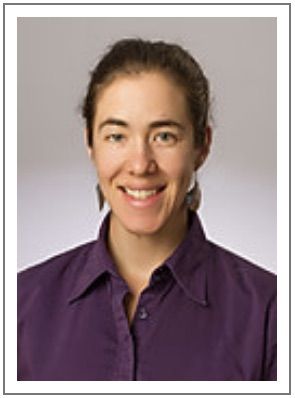How climate change adversely impacts women’s health
Climate change not only threatens public health, but in particular, women’s health.
©pathdoc - stock.adobe.com

Claire Herrick, MD

Climate change not only threatens public health, but in particular, women’s health.
Higher global temperatures, worsening air quality, rising sea levels, and more frequent and more extreme weather events (storms, floods and droughts) all converge to produce an unhealthy environment.
Add to the mix destabilized food and water supplies, as well as more vector-borne disease, and the need for solutions becomes overwhelming and urgent.
“Mental health also suffers with exposure to traumatic events,” said Claire Herrick, MD, an ob/gyn in private practice in Rio Rancho, New Mexico.
Dr. Herrick, who spoke on climate change and women’s health at the 2019 American College of Obstetricians and Gynecologists annual clinical and scientific meeting in Nashville, noted it is primarily underlying disparities, rather than physiologic differences, that make climate change so dangerous for women.
“Women endure higher rates of poverty, underemployment, lower wages, less political representation and less representation in emergency response planning,” Dr. Herrick told Contemporary OB/GYN. “Because of these disparities, when events occur or when there are chronic stresses like air pollution or drought, women are more vulnerable.”
Social, cultural, and gender norms also place women at higher risk. For instance, when inconsistent precipitation and rising temperatures disrupt food supplies, women tend to eat less to save food for their families.
Meanwhile, universal girls’ education and access to family planning could be a game changer for climate change, while also strengthening communities worldwide.
There are many opportunities for clinicians to act, in large and small ways. Aside from advocating for women’s health and education, the single most effective action is to follow the 2015 Lancet Commission recommendation for strong, sustained carbon pricing at the national level,” Dr. Herrick said.
Currently, there is a bipartisan carbon pricing bill introduced in the US House of Representatives. “It is important that we educate ourselves about this groundbreaking bill and urge our representatives to support it,” Dr. Herrick said.
Practicing in New Mexico, Dr. Herrick regularly counsels her patients about exposure to heat and air pollution in pregnancy, both of which increase the risk of preterm birth and low birthweight.
More broadly, 8% to 10% of US greenhouse gas emissions originate from the health sector. “This is a huge footprint,” she said. “But we are doing almost nothing about it on a national level.”
Still, Kaiser Permanente has committed to carbon neutrality by 2020, and other health systems have begun to make changes, according to Dr. Herrick. “There is a lot of room for improvement in energy efficiency in hospitals and clinics,” she said.
For example, anesthetic gases are hundreds of times more potent than carbon dioxide at trapping heat in the atmosphere and are fairly expensive. “Improved sequestration of those gases is a double win: for the atmosphere and for the hospital’s financial bottom line,” Dr. Herrick said.
Furthermore, regional medical societies can issue statements about the threat posed to health by climate change, supporting provider education as well as encouraging local mitigation and adaptation efforts.
In the academic realm, “the health impacts of climate change are offered at a growing number of medical schools,” said Dr. Herrick, co-chair of the Corrales, New Mexico, chapter of Citizens' Climate Lobby (CCL).
Women’s health clinicians can also collaborate with public health officials to ensure that emergency response planning efforts include information specifically for pregnant women.
“We are very early in the process of addressing climate change as it relates to women’s health,” said Dr. Herrick. “But as healthcare practitioners, we are a trusted voice – with our patients, communities and representatives. We must use our voice to protect those in our care.”
